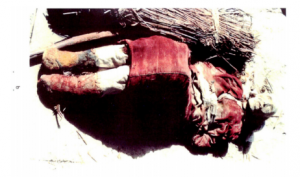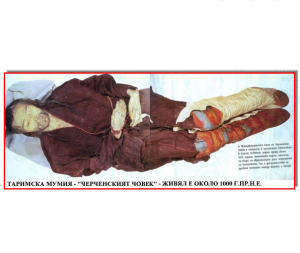Qiemo
May 21, 2017
(Written by Jonathan Rodriguez)
Alternative Spelling: Cherchen, Chärchän, Charchan, Qarqan, Shanshan // Chinese: 且末 (Qiĕmò)
Coordinates: 38°08′N 85°31′E
Geography + Borders
Qiemo exists as a region, considered as both a city and a county. Qiemo is located within the contemporary borders of the Xinjiang region of Northwestern China, landlocked and sharing borders with many Central Asian countries (Mongolia, Russia, Tajikistan, Kazakhstan, Kyrgyzstan, India, etc.) and sits at a diverse crossroads of a geographic distinctiveness. Facing the south, the county lies on the northern foothills of the Kunlun Mountains and eastern foothills of the Altun Mountain range, scattered across the southeast end of the Taklimakan Desert perpendicular to the Altun and Tian Shan Mountain range. Qiemo town is found on the bountiful oasis within the desert, along the riversides of the Qarqan River that drains from the Tian Shan glacier banks across the Tarim Basin (Google Earth) (Stein 1995: 380).
Qiemo town claims ownership to many important excavated sites that lie in proximity to the town’s center, and due to its historic abundance in resources within the desert, consequently holds a rich historical importance as a geographic hub over trade and power.
Archaeology
Qiemo, the Tarim Basin, and the Taklimakan Desert are known for claiming origin to many incredible archeological finds that are established as well known artifacts of the region, and as milestone excavations celebrity to Central Asian archeological evidence in the formation of its prehistoric regional identity.
The most striking and important excavation is that of the famous Chärchän Man (Qarqan Man). In archeological debates on the “Indo-European problem” and the ethnographic information on the racial genetic identity of this early modern human, this particular Tarim mummy proves the most in tact – a spectacle questioning the construction of prehistoric migration direction and biological diversity in the region.
The excavation of the site, led by Victor H. Mair and J. P. Mallory in 1971, was carried out around 6 kilometers from Qiemo town in Zaghunluq village in the county (named after tuzluqqash, the rich salt mined from the very deposits that conduces the coincidental mummification process), uncovering a multitude of tombs, some untouched and some already discovered/looted. A number of things were found in the tombs, including drinking vessels, sheep’s heads, horse remains, animal skins (one of a horse and two od wild buffalo), organized tree limbs, tomb carving art, pottery, textiles, reeds, bone utensils (such as spoons, hair combs, cups), ritual yarn and wood (Anthony 2001: 77).

Figure 2: A preserved female corpse found in Tomb 85QZM 2 (Photo courtesy of excavation study by Dolkun Kamabri)
Focusing on the mummified corpses, Tarim tombs at large have held a number of mummies, buried meticulously amongst the several tombs and the organized objects within them. Of the corpses, the bodies of men, women, and even toddlers were found, mummified with intricate dress and objects. One corpse (one male found in Tomb 85QZM 2) was found traces of makeup on his face, braided hair, and colorful clothing. A female corpse was also found, with similar makeup (made of ochre in sun symbolism patterns) with artificial braided hair. These corpses were found in a tomb amongst 2 other decaying ones, with crossed arms and legs, buried amongst wall art (with animal and hand symbology) and items that may have been used as fire symbols (wooden objects, yarn0, on an enclosed tomb covered with layers of material (tree limbs, willow and reed mats, animal hide), found in proximity to horse skull and legs (Kamabri 1994: 5-6). Amongst these corpses, a small oval tomb was also found, holding the corpse of an infant (~ < 3 months old) wrapped in purple wool on its body and blue wool on its head, and buried with other fabrics, a leather “baby bottle” in proximity to a sheep’s head buried nearby (Kamabri 1994: 5).

Figure 3: The Charchan Man. (Photo courtesy of excavation study by Dolkun Kamabri)
Anthropology + History
Using radiocarbon dating, the Bureau of Cultural Relics of Beijing tested 5 samples within the tomb, all indicating dates around 1000 BCE. The clothing and art style and food items emulating Bronze Age cultures in the tombs also relegate connection to modern Uyghur people, indicating possibility of being related to the Saka people of the area 3,000 years age (Kamabri 1994: 5-6).
Looking closer at the site details and context, considering Qiemo as an oasis site in the Taklimakan desert, is found to be an important site on the Silk Road, both historically and contemporarily in Northwestern China, which contributes to the high concentration of rich archaeological material found on the Basin.
The contemporary geopolitical context of these findings are important, as they debate the historical legitimacy of the ancestral lineage and agency of the Uyghur people currently in the area (amongst a diversity of indigenous lineages within the area). Previous studies based on linguistic analysis of ancient texts from the site come to the conclude that this Tocharian ancient language belonged to the Indo-European language family (Pringle 2010: 32-35) More recent studies of mitochondrial DNA of the several mummies on the basin provide to challenge Mair’s previous assertion about Caucasoid/Europoid DNA constituting the oldest dated mummies in the Tarim Basin, including research on the nearby Loulan Beauty and revisiting Charchan DNA sources. Archeologist Zhou Hui, amongst other academics, excavated nearby ancient cemeteries are currently conducting research to find DNA data connesting to lineages in Siberia and East and South Asia (Xiequan, M. 2010). Disparages between ancient Uyghur inscriptions, DNA data, and constant new archeological finds keep this debate of the Indo-Europian vs Asian ancestry debate rolling, sensitive to contemporary Uyghur identity and historical pride.
Qiemo is clearly visible on the map, populated in the oasis strip laying on the the Qarqan River, with its respective surrounding geography.
Bibliography
Anthony, D. (2001). Tracking the Tarim Mummies. Archaeology, 54(2), 76-84.
Retrieved from http://www.jstor.org/stable/41779400
Bovington, C. H., Jr., R. H., Mahdavi, A., et al. (1974). The Radiocarbon Evidence for the Terminal Date of the
Hissar IIIC Culture. Iran, 12, 195. doi:10.2307/4300513
Kamberi, D. (1994). The Three Thousand Year Old Charchan Man Preserved at Zaghunluq : Abstract
Account of a Tomb Excavation in Charchan County of Uyghuristan
http://www.sino-platonic.org/complete/spp044_charchan_man.pdf
Kamberi, D. (1986). Tarim Arkheologjyasidiki Bir Qetimliq Zor Tepilish, Xinjiang Miidiiniy Yadikarliqliri, 1-11.
Pringle, H. (2010). Battle for the Xinjiang Mummies. Archaeology, 63(4), 30-35. Retrieved from http://www.jstor.org/stable/41780584
Stein, A. (1925). Innermost Asia: Its Geography as a Factor in History. The Geographical Journal, 65(5), 377-403.
doi:10.2307/1782547
Xiequan, M. (2010, April 29). Xinjiang discovery provides intriguing DNA link. Retrieved May 9, 2017, from
http://news.xinhuanet.com/english2010/china/2010-04/29/c_13272928.htm